CBSE Class 10 Mathematics begins with Chapter 1: Real Numbers, one of the most important and scoring topics in the syllabus. This chapter lays the foundation for advanced mathematical concepts such as arithmetic progressions, polynomials, and number theory. It mainly covers topics like the Fundamental Theorem of Arithmetic, HCF and LCM, and Irrational Numbers. Real Numbers is a completely scoreable chapter that carries six marks if correctly solved. Students can download the pdf for free to keep and practice in future.
For students preparing for the CBSE Class 10 Board Exam 2026, mastering Real Numbers is crucial as it carries a good weightage and often includes both short and long-answer questions. Below are some important questions with detailed answers to help you strengthen your concepts and prepare effectively.
CBSE Class 10 Maths Exam 2026: Key Highlights
| Particulars | Details |
| Board | Central Board of Secondary Examination (CBSE) |
| Exam Mode | Offline |
| Subject | Mathematics |
| Paper Name | Maths Standard and Maths Basic |
| Chapter Name | Real Numbers |
| Chapter Weightage | 6 Marks |
| Medium/ Language | English and Hindi |
| Exam Duration | 3 Hours |
| Total Marks | 100 |
| Theory Paper | 80 Marks |
| Internal Assessment | 20 Marks |
Important Questions and Answers for CBSE Class 10 Maths Chapter 1: Real Numbers
Section A: One-mark Questions
-
Which of the following is an irrational number?
a) 0.75 b) 7/25 c) √5 d) 4.2 -
The prime factorization of 84 is
a) 2² × 3 × 7 b) 2 × 3² × 7 c) 2² × 7² d) 2³ × 3 × 7 -
If HCF of two numbers is 12 and their product is 864, then their LCM is
a) 36 b) 72 c) 144 d) 576 -
Which of these pairs are co-prime?
a) (8, 12) b) (9, 28) c) (14, 21) d) (6, 9) -
What is the HCF of 91 and 287?
-
Write the representation of 60 as a product of prime factors.
-
State Euclid’s Division Lemma (in one line).
-
What is the nth term of Euclid’s lemma expression? Or: In Euclid’s lemma, what is r in “a = bq + r”?
-
Is 0 an irrational number or rational number?
-
What is the HCF of 0 and any nonzero integer a?
Section B: Two-mark Questions
-
Use Euclid’s algorithm (division method) to find HCF of 1078 and 462.
-
Show that √7 is irrational.
-
Find LCM and HCF of 240 and 360 using prime factorization.
-
Express 2310 as a product of its prime factors.
-
If two numbers are 45 and 60, find their HCF and LCM.
-
If p is prime, show √p is irrational.
-
Using Euclid’s Division Lemma, find HCF of 1234 and 56.
-
Prove that there are infinitely many primes.
-
Show that between any two rational numbers there exists an irrational number (or briefly argue irrational numbers are “dense”).
-
Using prime factorization, find LCM of 84, 90, and 126.
Section C: Three-mark Questions
-
Prove that √2 + √3 is irrational (or show that the sum of two irrational square roots in some cases is irrational).
-
Use Euclid’s Division Lemma to derive that HCF (a, b) = HCF(b, r) in the division step.
-
Find HCF and LCM of 450, 600, 675.
-
If the HCF of two numbers is 14 and their LCM is 1680, and one number is 84, find the other.
-
Prove that √3 + √5 is irrational.
-
If 2^m = 3^n for some positive integers m, n, show that this leads to a contradiction (i.e., no nonzero integer solution).
-
Let a and b be two positive integers such that a divides b. Prove that HCF(a, b) = a and LCM(a, b) = b.
-
If p, q, r are three primes (not necessarily distinct), prove that every integer N > 1 can be written uniquely (except for ordering) as a product of primes.
-
Prove that √(p/q) is irrational if p and q are positive integers and p/q is not a perfect square.
-
Show that among any n + 1 positive integers, there exist two whose difference is divisible by n. (This is a bit more general, but ties into the divisibility idea.)
Section D: Case Study Based Questions (4 Marks)
Case Study 1
A teacher gives three students numbers 462, 792, and 1378 and asks them to find their HCF and LCM, and to check whether their square roots are rational or irrational.
-
(a) Find HCF and LCM of 462, 792, and 1378.
-
(b) Decide which of √462, √792, √1378 are irrational.
-
(c) Express each of the three numbers in prime factorization form.
-
(d) Are any two of the numbers co-prime? Justify.
Case Study 2
A factory has three machines producing well counts of items: 168, 210, and 280 pieces per hour. The manager wants to find the largest batch size that divides all production counts evenly and also find how many such batches per hour.
-
(a) What is the largest batch size that divides 168, 210, 280 evenly (i.e. HCF)?
-
(b) How many batches per hour for each machine?
-
(c) Also find the least number of hours after which all three machines produce a common multiple of batch size (i.e. LCM and its interpretation).
Case Study 3
A competition has prizes for prime numbered participants. After the event, the organizer realized that some participants have repeated prime factors in their registration codes. He lists codes: 462, 770, 1001, 1210
-
(a) Factorize each code into primes.
-
(b) Among those codes, find any two which are co-prime.
-
(c) What is the HCF and LCM among all four codes?
-
(d) Are the square roots of any of those codes rational or irrational?
Case Study 4
In a number theory research group, the numbers 123, 246, 369 are being considered. The researcher wants to explore their common divisors, possible irrational square roots, and prime factorizations.
-
(a) Factorize 123, 246, 369.
-
(b) Find HCF and LCM.
-
(c) Which of √123, √246, √369 are irrational?
-
(d) Are any pairs co-prime?
Case Study 5
A software algorithm is given three integer inputs: 225, 360, 450. The algorithm must compute greatest common divisor, least common multiple, factorization, and test for square roots being rational or irrational.
-
(a) Prime factorize 225, 360, 450.
-
(b) Compute HCF and LCM.
-
(c) Are √225, √360, √450 rational or irrational?
-
(d) Are any of the numbers co-prime pairs?
Answers
Section A: One Marks
| Question No. | Answer |
| 1. | c) √5 |
| 2. | a) 2^2×3×7 |
| 3. | b) 72 |
| 4. | b) (9, 28) |
| 5. | (7) |
| 6. | 60 =2^2×3×7 |
| 7. | a=bq+r, where 0≤r<b |
| 8. | (r) is the remainder |
| 9. | Rational (0 = 0/1). |
| 10. | (|a|) (the absolute value of (a) |
Section B: Two Marks
| Question No | Answer |
| 1. | HCF of 1078 and 462 using Euclid's Algorithm We apply the division algorithm repeatedly: a=bq+r, where 0≤r<b.
Since the remainder is 0, the divisor at this stage is the HCF. HCF(1078,462)=154 |
| 2. | Show that √7 is irrational We use proof by contradiction.
|
| 3. |
|
| 4. | Express 2310 as a product of its prime factors 2310=2×3×5×7×11 |
| 5. |
|
| 6. | If √p is prime, show √p is irrational This is the general form of question 2. We use proof by contradiction.
√p is an irrational number. |
| 7. | Using Euclid's Division Lemma, find HCF of 1234 and 56 We apply the division algorithm:
Since the remainder is 0, the divisor at this stage is the HCF. HCF(1234,56)=2 |
| 8. | Prove that there are infinitely many primes We use Euclid's proof by contradiction (circa 300 BC).
|
| 9. | |
| 10. | |
Section C: Three Marks
| Question No. | Answer |
| 1. | |
| 2. | Deriving HCF(a,b)=HCF(b,r) using Euclid’s Division Lemma The Euclid's Division Lemma states: a=bq+r, where 0≤r<b.
|
| 3. | We use the Prime Factorization Method.
|
| 4. | The relationship between HCF, LCM, and two numbers (a and b) is: HCF(a,b)×LCM(a,b)=a×b Given: HCF=14, LCM=1680, a=84. Find b. 14×1680=84×b b=14×1680/84 Since 84=6×14, we simplify: b=1680/6 b=280 |
| 5. | |
| 6. | Show that 2m=3n has No Non-zero Integer Solution
|
| 7. | Given that a divides b, we can write b=k⋅a for some positive integer k. HCF(a,b)
LCM(a,b)
|
| 8. | Prove the Uniqueness of Prime Factorization (Fundamental Theorem of Arithmetic) The theorem states that every integer N>1 can be uniquely (except for the order) written as a product of primes. Proof of Uniqueness (by Contradiction):
|
| 9. | |
| 10. | Show that among any n+1 positive integers, there exist two whose difference is divisible by n. This is proven using the Pigeonhole Principle.
Therefore, among any n+1 integers, there exist two whose difference is divisible by n. |
Section D: Case Study Based (4 Marks)
| Question No. | Answer |
| 1. |
(d) Are any two of the numbers co-prime? Justify. No, none of the pairs are co-prime. Justification: Two numbers are co-prime if their HCF is 1. Since 2 is a prime factor of all three numbers (462, 792, and 1378), the HCF of any pair must be at least 2.
Since no pair has an HCF of 1, no two of the numbers are co-prime. |
| 2. | (b) Batches Per Hour for Each Machine To find the number of batches per hour, divide each machine's production count by the largest batch size (HCF = 14).
|
| 3. | (a) Factorize each code into primes.
(b) Among those codes, find any two which are co-prime. Two numbers are co-prime if their HCF is 1 (i.e., they share no common prime factors). The code 1001 (prime factors {7,11,13}) and the code 1210 (prime factors {2,5,11}) are not co-prime, as they share the factor 11. However, the codes 462 (factors {2,3,7,11}) and 1001 (factors {7,11,13}) are not co-prime (HCF = 77). Let's check 462 and 1210: HCF = 2×11=22 (Not co-prime). Let's check 462 and 770: HCF = 2×7×11=154 (Not co-prime). It appears no pair in this list is co-prime. Every pair shares at least one common prime factor:
There are no two codes in the given list that are co-prime.
|
| 4. |
(d) Are any pairs co-prime? Two numbers are co-prime if their HCF is 1. Since the HCF of all three numbers is 123, any pair will have an HCF of at least 123.
No, none of the pairs are co-prime. Justification: The HCF of every possible pair is 123, which is not 1. |
| 5. |
(d) Are any of the numbers co-prime pairs? Two numbers are co-prime if their HCF is 1. Since the HCF of all three numbers is 45, any pair of these numbers will have an HCF of at least 45.
No, none of the pairs are co-prime, as the smallest HCF of any pair is 45. |
To Check all the detailed answers of the important question of CBSE Class 10 Maths Chapter 1: Real Numbers, Dowload PDF from the link provided below:
CBSE Class 10 Maths Chapter 1 Real Numbers: Download PDF of Important Questions and Answers |
Why Are These Questions Important?
-
Division Algorithm and HCF/LCM problems appear very frequently in CBSE exams.
-
Proofs of irrationality (√2, √p, sums of square roots) are standard.
-
Prime factorization is a recurring subtopic.
-
Case-study / application-based questions are becoming popular in newer assessments to test understanding in context.
-
Mixed MCQs in one-mark sections help test quick recall and concept clarity.
Class 10 Maths: Deleted Syllabus (2025–26)
For the 2025–26 academic year, the Central Board of Secondary Education (CBSE) has streamlined the Class 10 Mathematics syllabus to alleviate student workload. In Chapter 1: Real Numbers, the following topics have been removed:
-
Euclid’s Division Lemma (Section 1.2)
-
Revisiting Rational Numbers and Their Decimal Expansions (Section 1.5)
These deletions aim to focus on core concepts and facilitate a more manageable study plan. For a comprehensive list of all deleted topics across subjects, please refer to the full article below:
CBSE Class 10 Deleted Syllabus 2025–26: Subject-wise List of Removed Topics
The CBSE Class 10 Chapter 1: Real Numbers is essential for building strong mathematical reasoning skills. Questions from this chapter test students’ conceptual understanding and problem-solving accuracy. Regular practice of important questions like these ensures full marks in short and long answer sections. Students are advised to revise the prime factorization method, and properties of irrational numbers thoroughly before the board exam. Keep solving sample papers and NCERT exemplar questions for better confidence and accuracy.
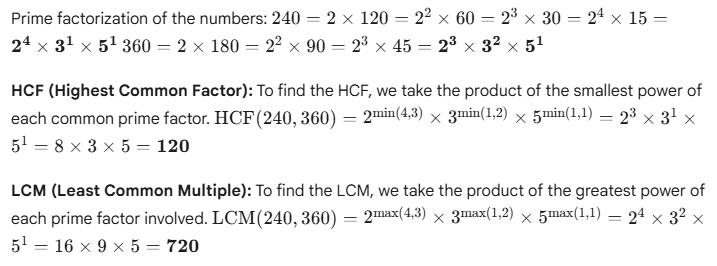

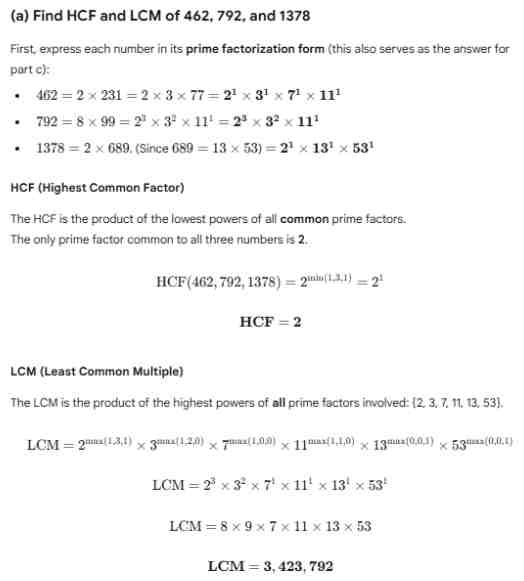
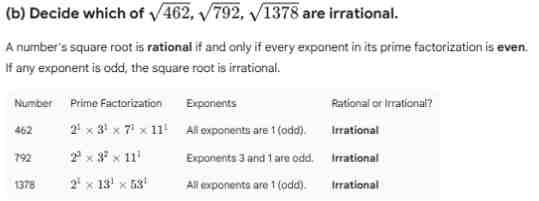

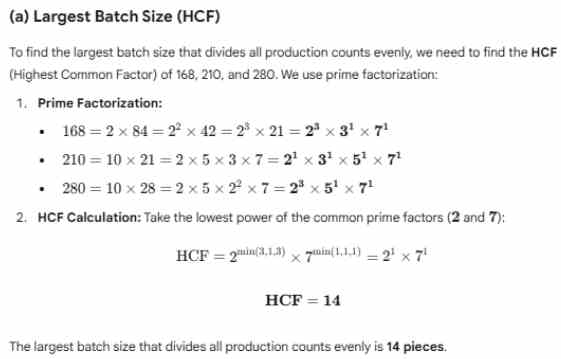
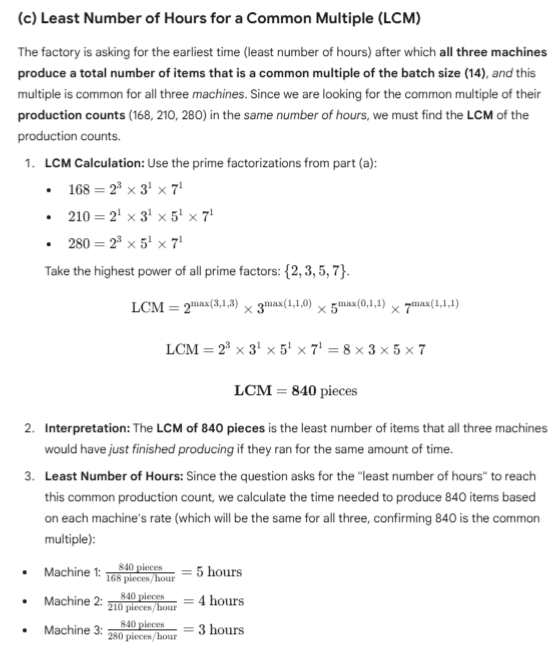
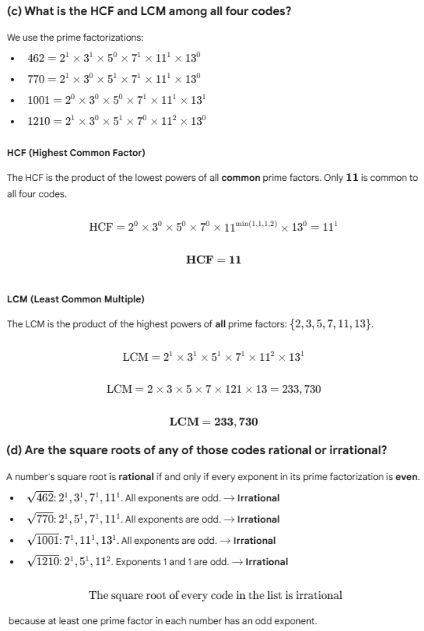
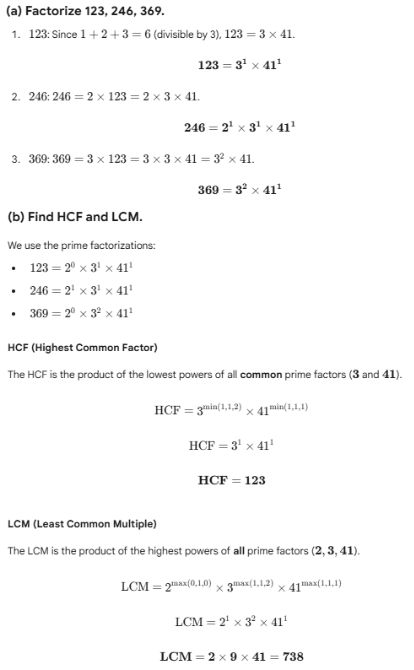
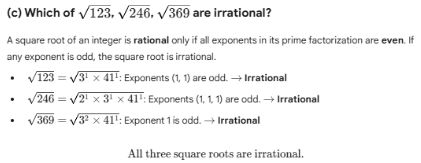
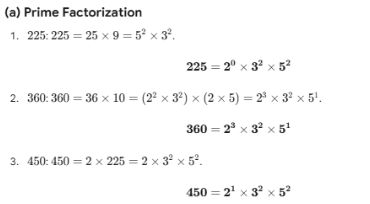
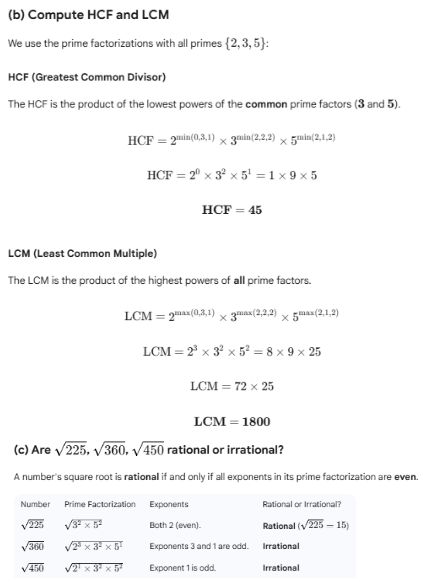
Comments
All Comments (0)
Join the conversation